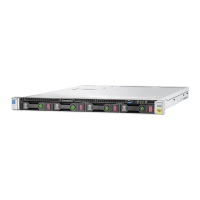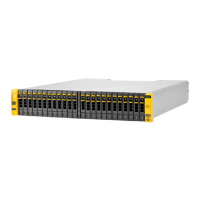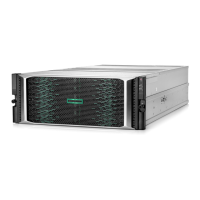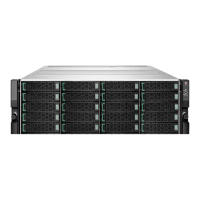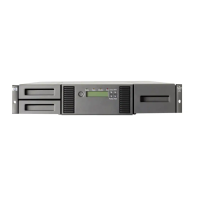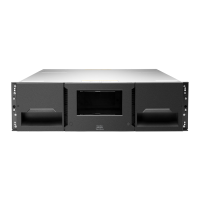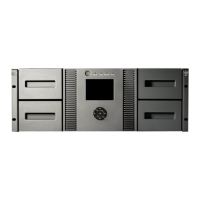3. The picker gets a cartridge from a storage slot.
4. The picker inserts the cartridge into the drive aperture.
5. The picker lets go of the cartridge and pushes the cartridge to the position of soft load initiation.
6. The drive automatically takes the cartridge, loads it and threads it.
Load scenario 2: Library controlled
1. The host sends a Move Medium command to the robotics.
2. The picker gets a cartridge from a storage slot.
3. The picker inserts the cartridge to the position of soft load initiation.
4. The picker lets go of the cartridge.
5. The library sends a Load command to the drive.
6. The drive takes the cartridge, then loads and threads it.
Unload scenario 1: Autoload
1. The library sends a command to enable Auto-Eject. It is only necessary after a drive power-on.
2. The host sends an Unload command to the tape drive.
3. The drive rewinds, unthreads, and ejects the cartridge to Eject Point.
4. The host sends a Move Medium command to the robotics.
5. The picker takes the cartridge from the tape drive and places it in its storage slot.
Unload scenario 2: Library controlled
1. The host sends an Unload command to the drive.
2. The drive rewinds and unthreads the tape. It then pauses with the cartridge at ready-to-eject position.
3. The library sends an Unload command to eject the cartridge.
4. The drive ejects the tape to Eject Point.
5. The picker takes the cartridge from drive and places it in its storage slot.
Using Cartridge Memory (LTO-CM) in libraries
Cartridge memory offers possibilities for use in libraries as an adjunct to or replacement for barcodes. The
following diagram shows the architecture required.
58 Using Cartridge Memory (LTO-CM) in libraries
